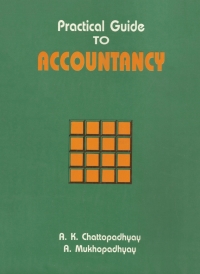Answered step by step
Verified Expert Solution
Question
1 Approved Answer
1. EBITDA means earnings before interest, taxes, depreciation, and amortization. true or false 2. Preferred stock is a hybrid or a cross between common stock
1. EBITDA means earnings before interest, taxes, depreciation, and amortization. true or false 









3. It is the quantitative information primarily financial in nature that is intended to be used in decision making. * (1 Point) Annual report Audited Financial Statements Budget Statement Financial Statements 3. These are resources controlled by the enterprise as a result of past transactions and events and from which future economic benefits are expected to flow to the enterprise. * (1 Point) Assets O Liabilities Equity Revenue 5. It shows the movement of capital accounts and this will be reported during the accounting period. * (1 Point) Balance Sheet Income Statement Statement of Cash Flows Statement of Changes in Equity 7. It shows the movement of cash balances and it generally differs from its accounting profit because of some of the revenues and expenses. * (1 Point) Balance Sheet O Income Statement Statement of Cash Flows Statement of Changes in Equity 8. It represents the equity or claims of the owners on the assets of the business and it consists of Preference shares, Ordinary shares, Paid-up capital, and Retained earnings. * (1 Point) Assets O Liabilities Stockholders' Equity Revenue 11. It shows the results of the operation of a company for a specified period of time. It can cover any period of time, but it is usually prepared monthly, quarterly, and annually. (1 Point) Balance Sheet Income Statement Statement of Cash Flows Statement of Changes in Equity 12. It represents "snapshots" of its financial position on the last day of each year and it shows how wealthy or poor is an organization. (1 Point) Balance Sheet Income Statement Statement of Cash Flows Statement of Changes in Equity 15. These are the present obligations of an enterprise arising from past transactions or events, the settlement of a result in an outflow from the enterprise of resources embodying economic benefits. * (1 Point) Assets Liabilities Stockholders' Equity Revenue 19. It shows the movement of cash balances and it generally differs from its accounting profit because some of the revenues and expenses listed on the income statement were not received or paid in cash during the year. (1 Point) Balance Sheet Income Statement Statement of Cash Flows Statement of Changes in Equity 20. It begins with the chairman's description of the firm's operating results during the past year and a discussion of new developments that will affect future operations and it presents five basic financial statementsthe balance sheet, the income statement, the statement of stockholders' equity, the statement of cash flows; and the notes to the financial statements (1 Point) Annual report O Audited Financial Statements Budget Statement Financial Statements 2. Preferred stock is a hybrid or a cross between common stock and debt. In the event of bankruptcy, preferred stock ranks below debt but above common stock and it pays a fixed dividend and does not benefit if the companys earnings grow.true or false
3. Depreciation applies to intangible assets, such as plant and equipment, whereas amortization applies to tangible assets such as patents, copyrights, trademarks, and goodwill. true or false
4. Preferred and common stockholders have the right to vote in the corporation. true or false
5. Retained earnings are the cumulative amount of earnings that have not been paid out as dividends.true or false
multiple choice










Step by Step Solution
There are 3 Steps involved in it
Step: 1

Get Instant Access to Expert-Tailored Solutions
See step-by-step solutions with expert insights and AI powered tools for academic success
Step: 2

Step: 3

Ace Your Homework with AI
Get the answers you need in no time with our AI-driven, step-by-step assistance
Get Started


